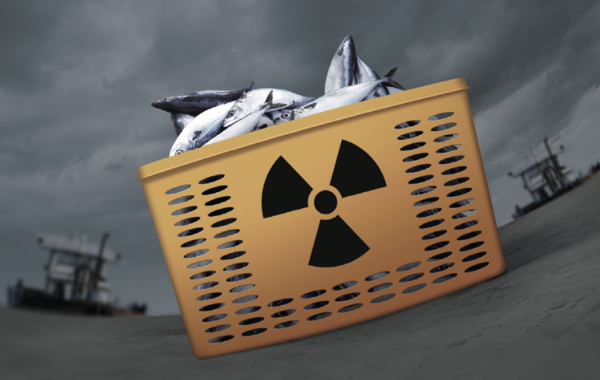Japan finally announced the plan to discharge the Fukushima Power Plant wastewater into the Pacific Ocean. Although many neighboring countries including Korea voiced their concerns, Japan started a full-scale release of the wastewater with the agreement of the Group of Seven (G7) and the International Atomic Energy Agency (IAEA). The decision of discharging wastewater has sparked various debates around the world. Hence, the Sungkyun Times (SKT) will introduce the concept of Fukushima wastewater, its benefits and drawbacks, and its impact on diverse areas.
What Is Fukushima Wastewater?
-How Does Fukushima Wastewater Come About
The issue of Fukushima wastewater release dates back to 2011, when Japan’s Tohoku Earthquake severely damaged the Fukushima nuclear facility. The explosion created by the disaster destroyed the cooling system required to prevent nuclear reactors from overheating. To relieve the heat, Japan has been using coolant to cool down melted nuclear fuel. In this process, the coolant transforms into contaminated water that contains radioactive substances such as tritium, cesium, and strontium. Furthermore, groundwater enters the cracked reactor building and transforms into a radioactive substance. It is then mixed with rainwater and generates about 90 to 180 tons of wastewater daily. Such highly polluted wastewater has been stored in tanks near the nuclear power plant, which reaches approximately 1,320,000 tons. Japan claimed that releasing wastewater is the only method to solve the issue, as storing wastewater in tanks is no longer possible due to the lack of space. Accordingly, the Japanese government announced a plan to discharge wastewater into the Pacific Ocean after completing the purifying process.
-Method of Releasing Wastewater and Its Growing Controversy
Japan has revealed its plan to purify contaminated water by using an Advanced Liquid Processing System (ALPS) to make ALPS-treated water. This purified water will then undergo reprocessing to meet international discharge standards and will be released to the sea. The process involves diluting ALPS-treated water with seawater to decrease the level of tritium below the international standard. Such a plan is expected to continue over the next 30 years. However, the most controversial issue with the plan is that ALPS cannot entirely remove tritium, a radioactive isotope that occupies the largest portion of wastewater. Despite the controversy, Tokyo Electric Power Company (TEPCO) finished the installation of the discharge plant in June and then started the release. Meanwhile, the Korean government generally acknowledged the safety of wastewater release. According to Money Today, Yoo Kuk-hee, the head of the Fukushima inspection team dispatched in May, said they verified the safety of the discharge facility. He claimed that Japan’s facilities satisfy the standard level for tritium discharge, which is 1,500 Bq/L. In contrast, most of the public in Korea strongly disagreed with the government’s idea. According to a joint survey conducted by the Yomiuri Newspaper and Hankook Ilbo in May, 84% of Koreans opposed the release of Fukushima wastewater. Most were concerned about the safety of the process, stating that the purification process does not guarantee the proper removal of radioactivity. As a result, the release of wastewater has caused heated debates and remains highly controversial.

Controversy of Fukushima Wastewater Release
-The pros
1. Safety of Wastewater
People who agree with releasing Fukushima’s wastewater argue it is safe enough. The Japanese government has stated that the wastewater strictly follows the regulatory standard of the International Commission on Radiological Protection (ICRP). They have claimed that most radioactive materials, except tritium and carbon-14, are purified to a level that falls under the standards after using ALPS. Additionally, they have emphasized that tritium will be filtered so that wastewater cannot harm nearby countries’ marine environments. According to a simulation by the Korea Atomic Energy Research Institute and the Korea Ocean Science and Technology Institute, wastewater will flow into Korean territory for at least two years after. Then, the radioactivity concentration of tritium would be about 0.000001 Bq/L, which is safe enough for organisms. Moreover, even if tritium is absorbed into the human body, there will almost certainly be minimal impact on people. This is because its half-life is 12 days, most of which will be released from the body. Meanwhile, the IAEA officially concluded in July that Japan’s release plan meets safety standards. During a press conference in Japan, the secretary general of the IAEA stated that their two-year evaluation confirmed that the discharge process is technically reliable and qualified.

2. The Most Obvious and Cheapest Way
Discharging wastewater into the sea is the most controllable and economical method. Stratum injection and hydrogen release have not been technologically established, and underground burial is highly unlikely due to the difficulties in finding suitable land. Likewise, the atmospheric release is difficult to predict and observe after the discharge. On the other hand, Japan has stated that sea discharge allows for a more straightforward prediction of dilution and diffusion, making it more feasible to develop a monitoring system. Japan has further cited their previous experience with sea discharge, adding that they are confident in designing and operating facilities for wastewater. According to 2018 report of the subcommittee of ALPS, sea discharge is the cheapest way compared to other methods. For instance, while the sea discharge method is estimated to be around ¥3.4 billion, stratum injection and hydrogen release are each estimated to be ¥397.6 billion and ¥1 trillion. For these reasons, Japan has argued that sea discharge is the safest and most economical way under current circumstances.
-The Cons
1. Dangers of Wastewater
Opponents of releasing radioactive wastewater question the reliability of Japan’s claims regarding the safety of the wastewater. Countries such as Korea and China, which would directly be affected by the release, have repeatedly emphasized the dangers of wastewater, especially the harmful nature of tritium that remains untreated even after the ALPS process. According to Greenpeace, tritium is a toxic substance that can accumulate in the body and cause genetic mutations, which may lead to cancer or reproductive impairments. Opponents argue that even if the amount of tritium might be minimal, it is still unacceptable to dispense such hazardous substances into nature. Furthermore, they dispute the stability and trustworthiness of the ALPS process. In fact, according to the Ministry of Economy, Trade and Industry’s investigation in 2021, only 29% of the first ALPS-treated water met the radioactive standard. In addition, during a visit in May, the Korean inspection team secured records of eight ALPS malfunction cases, including corrosion and filter problems. Another issue raised is the lack of trust in the data provided by TEPCO. Dr. Ferenc, a nuclear physicist from the United States, pointed out the inconsistencies and inaccuracies in the data from TEPCO. Thus, there have been doubts about whether these errors are simple mistakes or intentional distortions, collectively contributing to the opponents’ claim that they cannot trust the data of TEPCO and the Japanese government.
2. Industrial Damage
There are concerns that even if wastewater may have little impact on the environment, it could significantly damage the image of the seafood industry. Indeed, the Korean seafood industry is facing direct consequences. In June, Busan Ilbo reported that the stock of Japanese fish, which used to sell out in three days, has not been sold for nearly two weeks after the announcement of the wastewater release. The biggest issue for the industry is the phenomenon of people avoiding seafood. According to a survey by the Korean Federation for Environmental Movement in May, 72% of respondents said they would reduce their seafood consumption after the wastewater discharge. During an interview with the SKT, a Korean housewife in her thirties shared, “I try to avoid seafood to protect my child’s health from any potential danger.” Wastewater release also led to concerns that the salt might be exposed to radiation, causing panic buying of salt. In May 2023, Enuri Dotcom, a price comparison website, revealed that the average price of the top three salt brands jumped to 76% due to panic buying. This situation exemplifies the anxiety of Korean citizens regarding the release of wastewater.

The Future Direction
-Diplomatic Efforts
At the point when the plan has already been announced, the most crucial issue would be Japan’s role. Since the release plan will span over 30 years, Japan must take responsibility by monitoring thoroughly and maintaining transparency of the monitoring results. Additionally, the Korean government should rightfully demand accurate data for the safety of its citizens and take proactive measures by engaging in international cooperation. Although many international laws are already forbidding the discharge of harmful substances into the sea, Japan contends that the nuclear wastewater release does not violate these laws. According to the United Nations Convention on the Law of the Sea, nations have an obligation not to cause harm to the marine environment through pollution. Moreover, the London Convention prohibits the discharge of wastes into oceans beyond national jurisdiction. Based on such laws, the Korean government should actively seek attention and cooperation from the international community by, for instance, filing a complaint against Japan at the International Tribunal for the Law of the Sea to prevent potential damages.
-Domestic Efforts
The long-term effect of accumulated wastewater on humans or the environment is yet to be fully known. Hence, the Korean government should establish its monitoring system to analyze and predict the domestic impact and scientifically validate information regarding Japan’s wastewater. If abnormalities are detected, the government should immediately act for its people. Regarding the ideas, Chung Bum-jin, a Professor of Nuclear Engineering at Kyung Hee University, said, “The Korea Atomic Safety Research Institute uploads a report on monitoring Korean oceans. The researchers have increased the number of surface water sampling sites to 200 and expanded the frequency of radioactive contamination tests on fish,” in an interview with the SKT. Additionally, it is essential to continue these efforts under supervision through the media. Finally, the government should strengthen the inspections of Japanese seafood and alleviate the anxiety of the public regarding seafood. Regarding this point, the Legislative Investigation Office has urged the government to enact a special act supporting the fishing industry after the release of Fukushima’s nuclear wastewater to establish a comprehensive recovery plan. Therefore, the government must ensure the safety of citizens and support the fishing industry.

The decision made by Japan to release wastewater has sparked a lot of controversy and discussion. Many people have weighed the advantages and disadvantages of this choice through countless debates. Since wastewater release is a global issue, it is crucial to continue the conversation. The SKT hopes Kingos will monitor the discharge and remain vigilant in the long run.
